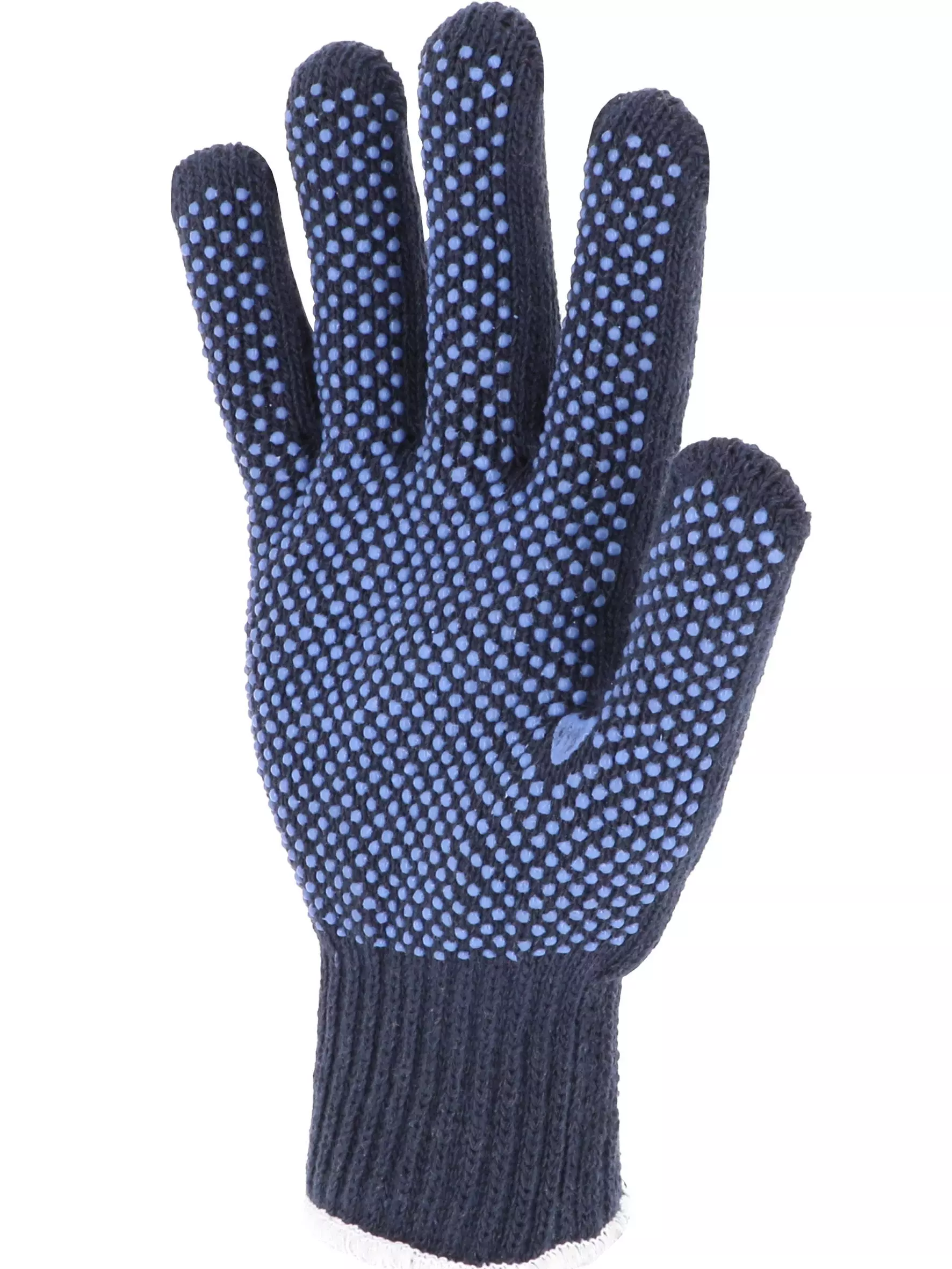These protective gloves feature a seamless knitted polyester and cotton liner with PVC dots on the palm for enhanced grip in dry environments. Designed with an elastic knitted wrist for secure fit and excellent ventilation due to the uncoated back, they provide comfort and functionality for light handling tasks. The gloves meet EN 388:2016+A1:2018 standards with a 1121X rating for mechanical protection and comply with EN ISO 21420:2020 requirements.
Product Features:
- Seamless knitted construction for improved comfort and reduced irritation
- Polyester and cotton blend combining durability with breathability
- PVC dots on palm for enhanced grip and handling precision
- Elastic knitted wrist with piping for secure fit
- Uncoated back for optimal ventilation
- Made with recycled fibers for better natural resource management
Technical Details:
- Gauge: 7
- One-piece knitted construction (seamless)
- EN 388:2016+A1:2018 certification with 1121X rating
— Abrasion resistance: Level 1
— Cut resistance: Level 1
— Tear resistance: Level 2
— Puncture resistance: Level 1
Recommended Applications:
- Light industry
- Transport
- Logistics
- Fine work in dry environments
- Light handling tasks
EAN: 3660514072992, 3660514073005, 3660514073029, 3660514073036
These protective gloves feature a seamless knitted polyester and cotton liner with PVC dots on the palm for enhanced grip in dry environments. Designed with an elastic knitted wrist for secure fit and excellent ventilation due to the uncoated back, they provide comfort and functionality for light handling tasks. The gloves meet EN 388:2016+A1:2018 standards with a 1121X rating for mechanical protection and comply with EN ISO 21420:2020 requirements.
Product Features:
- Seamless knitted construction for improved comfort and reduced irritation
- Polyester and cotton blend combining durability with breathability
- PVC dots on palm for enhanced grip and handling precision
- Elastic knitted wrist with piping for secure fit
- Uncoated back for optimal ventilation
- Made with recycled fibers for better natural resource management
Technical Details:
- Gauge: 7
- One-piece knitted construction (seamless)
- EN 388:2016+A1:2018 certification with 1121X rating
— Abrasion resistance: Level 1
— Cut resistance: Level 1
— Tear resistance: Level 2
— Puncture resistance: Level 1
Recommended Applications:
- Light industry
- Transport
- Logistics
- Fine work in dry environments
- Light handling tasks
EAN: 3660514072992, 3660514073005, 3660514073029, 3660514073036
These protective gloves feature a seamless knitted polyester and cotton liner with PVC dots on the palm for enhanced grip in dry environments. Designed with an elastic knitted wrist for secure fit and excellent ventilation due to the uncoated back, they provide comfort and functionality for light handling tasks. The gloves meet EN 388:2016+A1:2018 standards with a 1121X rating for mechanical protection and comply with EN ISO 21420:2020 requirements.
Product Features:
- Seamless knitted construction for improved comfort and reduced irritation
- Polyester and cotton blend combining durability with breathability
- PVC dots on palm for enhanced grip and handling precision
- Elastic knitted wrist with piping for secure fit
- Uncoated back for optimal ventilation
- Made with recycled fibers for better natural resource management
Technical Details:
- Gauge: 7
- One-piece knitted construction (seamless)
- EN 388:2016+A1:2018 certification with 1121X rating
— Abrasion resistance: Level 1
— Cut resistance: Level 1
— Tear resistance: Level 2
— Puncture resistance: Level 1
Recommended Applications:
- Light industry
- Transport
- Logistics
- Fine work in dry environments
- Light handling tasks
EAN: 3660514072992, 3660514073005, 3660514073029, 3660514073036





